So what do cherry shrimp eat ? While shrimp are known to be scavengers that can feed on almost anything they find, a well-rounded diet consisting of different types of food can help maintain their overall health and vitality. In this article, we will discuss the best types of food for aquarium shrimp
? While shrimp are known to be scavengers that can feed on almost anything they find, a well-rounded diet consisting of different types of food can help maintain their overall health and vitality. In this article, we will discuss the best types of food for aquarium shrimp .
.
- Algae Algae is an excellent food source for shrimp, especially for those that feed on it in the wild. There are different types of algae, including spirulina, chlorella, and nori, which are readily available in the market. Algae not only provides the necessary nutrients but also helps to maintain good water quality by absorbing excess nutrients.
- Vegetables Vegetables are another essential component of a shrimp’s diet. Shrimp can feed on a variety of vegetables such as zucchini
 , cucumber, spinach, and carrots. These vegetables are rich in fiber and vitamins, which aid in digestion and promote a healthy immune system.
, cucumber, spinach, and carrots. These vegetables are rich in fiber and vitamins, which aid in digestion and promote a healthy immune system. - Protein-rich food Shrimp require a good source of protein to maintain muscle mass and growth. High-quality protein sources include brine shrimp, bloodworms, daphnia, and krill. These foods are also available in frozen and freeze-dried forms, making them easy to store and use.
- Mineral-rich food Minerals are essential for a shrimp’s health and well-being. A lack of minerals can lead to problems such as molting issues and poor overall health. Calcium is a critical mineral
 for shrimp as it is required for the formation of their exoskeleton. Mineral-rich foods such as cuttlebone
for shrimp as it is required for the formation of their exoskeleton. Mineral-rich foods such as cuttlebone , eggshells, and mineral supplements can provide the necessary minerals.
, eggshells, and mineral supplements can provide the necessary minerals. - Commercial shrimp food Commercial shrimp food is available in different forms, including pellets, flakes, and granules. These foods are specifically formulated to meet the nutritional requirements of shrimp, and they are easy to use and store. However, it is essential to read the labels carefully to ensure that the food contains high-quality ingredients and does not contain harmful preservatives.
The best types of food for cherry shrimp are algae, vegetables, protein-rich food , mineral-rich food, and commercial shrimp food. It is essential to provide a well-rounded diet that includes a variety of food types to ensure that the shrimp receive all the necessary nutrients. Additionally, it is important to feed the shrimp in moderation and avoid overfeeding, which can lead to water quality issues and health problems. By following these guidelines, you can ensure that your aquarium shrimp remain healthy and vibrant.
, mineral-rich food, and commercial shrimp food. It is essential to provide a well-rounded diet that includes a variety of food types to ensure that the shrimp receive all the necessary nutrients. Additionally, it is important to feed the shrimp in moderation and avoid overfeeding, which can lead to water quality issues and health problems. By following these guidelines, you can ensure that your aquarium shrimp remain healthy and vibrant.

What do cherry shrimp eat and how often should I feed them?
Feeding frequency is an essential factor to consider when it comes to aquarium cherry shrimp. Overfeeding or underfeeding can lead to health problems and water quality issues, which can ultimately harm the shrimp. The feeding frequency for aquarium shrimp depends on various factors such as the number of shrimp in the tank, the size of the tank, and the type of food being used.
In general, it is recommended to feed cherry shrimp once or twice a day. However, the quantity of food and the frequency of feeding depend on the type of food and the size of the shrimp. For example, if you are using commercial shrimp food , you can feed the shrimp once or twice a day, depending on the size of the pellets or flakes. On the other hand, if you are feeding live or frozen food, you can feed the shrimp once a day, and it is essential to remove any uneaten food after a few hours.
, you can feed the shrimp once or twice a day, depending on the size of the pellets or flakes. On the other hand, if you are feeding live or frozen food, you can feed the shrimp once a day, and it is essential to remove any uneaten food after a few hours.
It is also important to note that shrimp are scavengers, and they will continuously search for food. Overfeeding can lead to uneaten food, which can ultimately harm the water quality and lead to the accumulation of toxins in the tank. Therefore, it is important to monitor the feeding frequency and adjust it based on the red cherry shrimp’s behavior and the amount of uneaten food.
shrimp’s behavior and the amount of uneaten food.
Another crucial factor to consider is the molting process. Shrimp shed their exoskeletons periodically to grow, and during this process, they are vulnerable to predators and stress. Therefore, it is recommended to reduce the feeding frequency during the molting process to reduce stress and provide a safer environment for the shrimp.
Feeding frequency is an essential factor to consider when it comes to aquarium shrimp. It is recommended to feed the shrimp once or twice a day, depending on the type of food and the size of the shrimp. It is also essential to monitor the feeding frequency and adjust it based on the shrimp’s behavior and the amount of uneaten food. By following these guidelines, you can ensure that your aquarium shrimp remain healthy and vibrant.

Can I feed my cherry shrimp human food?
Feeding aquarium cherry shrimp human food is not recommended as it can harm their health and lead to water quality issues. Human food is often high in salt, sugar, and fats, which are not suitable for shrimp. Additionally, human food may contain harmful preservatives and additives that can harm the shrimp’s health.
Furthermore, feeding shrimp human food can lead to the accumulation of uneaten food, which can harm the water quality and lead to the growth of harmful bacteria and toxins. This can ultimately harm the shrimp and lead to health problems.
Instead of feeding human food, it is recommended to provide a well-rounded diet that includes algae, vegetables, protein-rich food, mineral-rich food, and commercial shrimp food. These food types are specifically formulated to meet the nutritional requirements of shrimp and are safe to use.
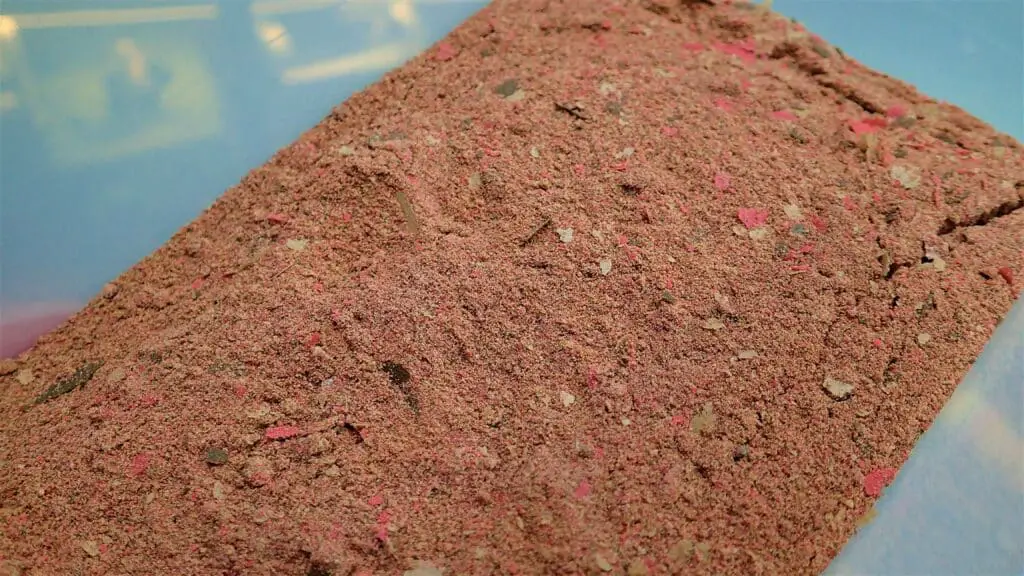
What is the difference between dry and frozen shrimp food?
When it comes to feeding aquarium shrimp, there are different types of food available, including dry and frozen shrimp food. Each type of food has its advantages and disadvantages, and it is important to understand the difference between them to make an informed decision.
Dry shrimp food is available in the form of pellets, flakes, and granules, and it is the most commonly used type of shrimp food. Dry food is easy to store and use, and it is available in different sizes to suit different types of shrimp. Dry food is also formulated to meet the nutritional requirements of shrimp, and it is easy to monitor the feeding frequency and quantity.
On the other hand, frozen shrimp food is available in the form of whole shrimp, shrimp pellets, and shrimp cubes. Frozen food is usually fresher than dry food and contains higher amounts of protein, which is essential for shrimp growth and muscle development. Additionally, frozen food is free from harmful preservatives and additives, which can be found in some types of dry food.
However, frozen shrimp food requires more preparation time and storage space than dry food. Frozen food needs to be thawed before feeding, and it is essential to remove any uneaten food after a few hours to prevent water quality issues.
Both dry and frozen shrimp food are suitable for feeding aquarium shrimp. Dry food is easy to store and use, and it is available in different sizes to suit different types of shrimp. Frozen food is fresher and contains higher amounts of protein, but it requires more preparation time and storage space. It is recommended to vary the type of food and use a combination of dry and frozen food to provide a well-rounded diet for aquarium shrimp.
aquarium shrimp. Dry food is easy to store and use, and it is available in different sizes to suit different types of shrimp. Frozen food is fresher and contains higher amounts of protein, but it requires more preparation time and storage space. It is recommended to vary the type of food and use a combination of dry and frozen food to provide a well-rounded diet for aquarium shrimp.
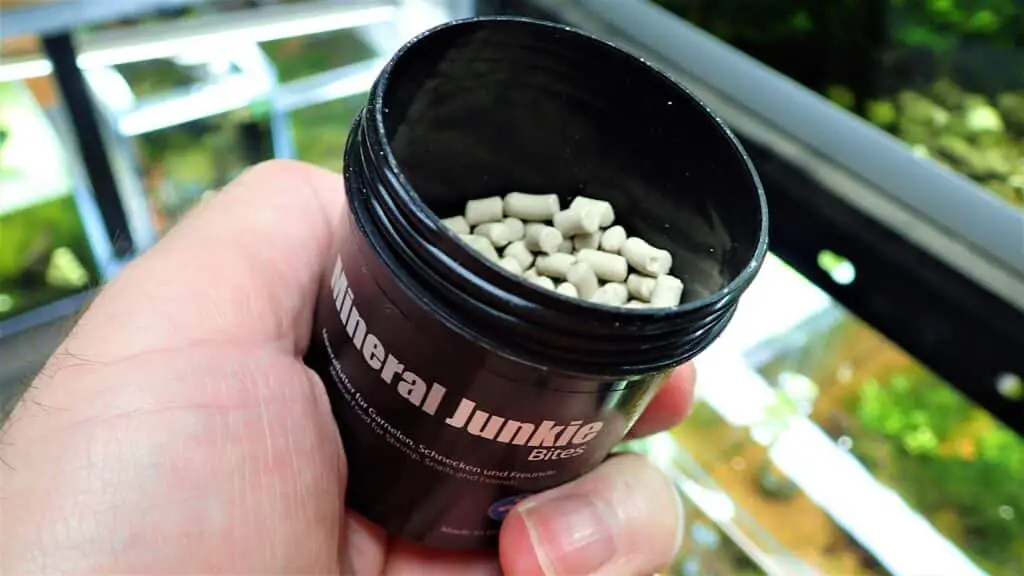
Are there any specific nutrients that aquarium shrimp need in their diet?
Cherry shrimp require a well-balanced diet that contains a variety of nutrients to maintain their overall health and vitality. Some of the essential nutrients needed by shrimp include:
- Protein: Shrimp require protein for muscle growth and development. High-quality protein sources include brine shrimp, bloodworms, daphnia, and krill.
- Carbohydrates: Carbohydrates are an important energy source for shrimp. Vegetables such as zucchini, cucumber, and spinach are excellent sources of carbohydrates.
- Fiber: Fiber is essential for digestion and gut health. Vegetables and algae are excellent sources of fiber.
- Vitamins: Shrimp require a variety of vitamins, including vitamin A, vitamin C, and vitamin E. These vitamins play an essential role in maintaining a healthy immune system.
- Minerals: Calcium, magnesium, and potassium are essential minerals required by shrimp. These minerals aid in the formation of the exoskeleton and promote overall health.
Aquarium shrimp require a well-balanced diet that contains a variety of nutrients, including protein, carbohydrates, fiber, vitamins, and minerals. It is essential to provide a well-rounded diet that includes a variety of food types to ensure that the shrimp receive all the necessary nutrients.
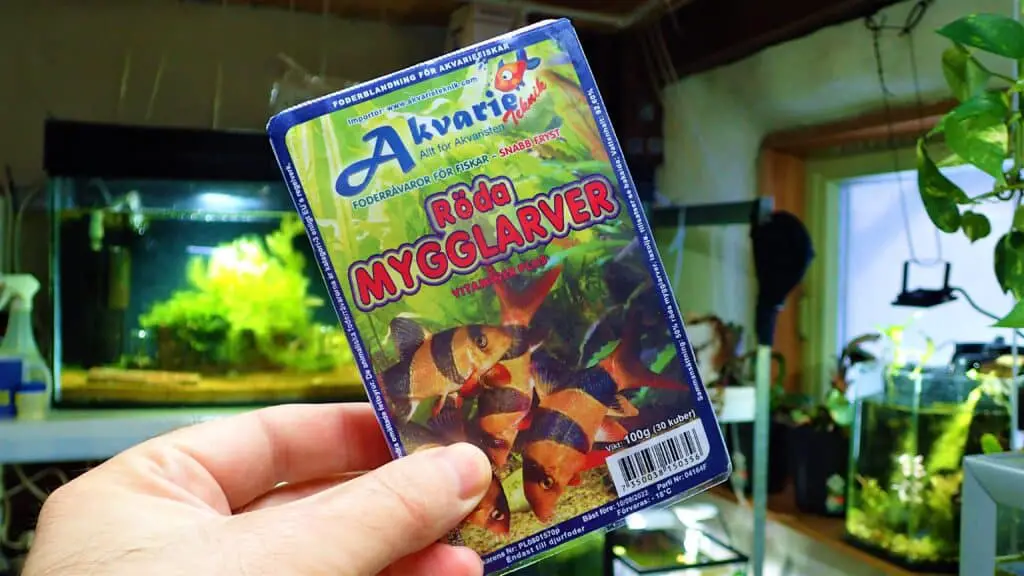
Should I vary my cherry shrimp’s diet or stick to one type of food?
It is recommended to vary the shrimp’s diet and provide a combination of different types of food to ensure that the shrimp receive all the necessary nutrients. A varied diet can help maintain the overall health and vitality of the shrimp and can also prevent boredom and encourage natural foraging behavior.
Furthermore, feeding the same type of food over an extended period can lead to the accumulation of uneaten food, which can ultimately harm the water quality and lead to the growth of harmful bacteria and toxins.
In addition to the health benefits, varying the shrimp’s diet can also provide an opportunity for the shrimp to exhibit their natural foraging behavior. In the wild, shrimp feed on a variety of food sources, and providing different types of food can help replicate their natural diet and behavior.
It is important to note that when varying the shrimp’s diet, it is essential to provide a well-balanced diet that includes a variety of nutrients. This can be achieved by providing a combination of algae, vegetables, protein-rich food, mineral-rich food, and commercial shrimp food.
It is recommended to vary the shrimp’s diet and provide a combination of different types of food to ensure that the shrimp receive all the necessary nutrients. A varied diet can help maintain the overall health and vitality of the shrimp and can also prevent boredom and encourage natural foraging behavior.
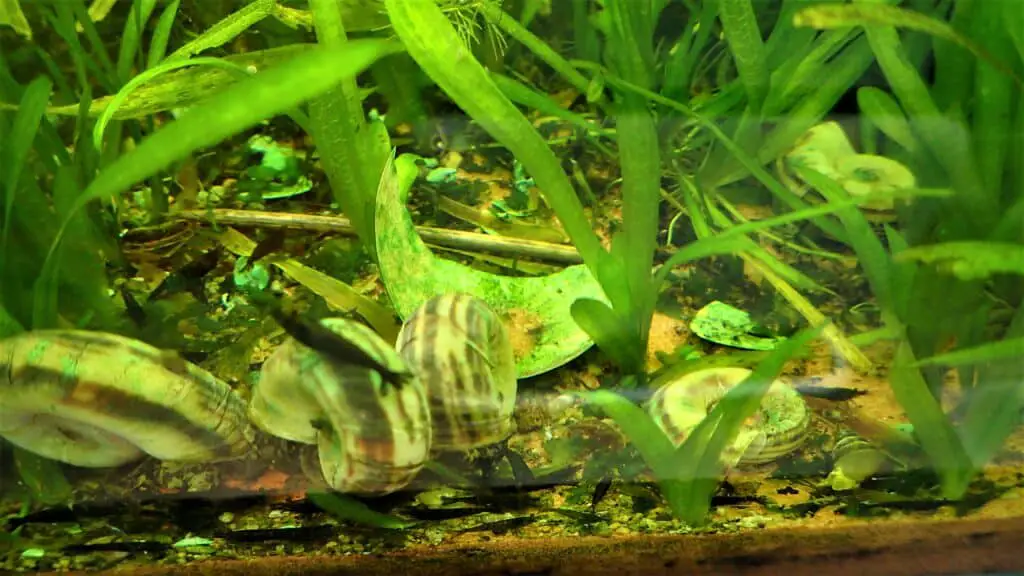
Can overfeeding harm my aquarium shrimp?
Overfeeding can harm the health and well-being of aquarium shrimp in several ways. When shrimp are overfed, they tend to produce more waste, which can lead to the accumulation of harmful toxins in the water. This can ultimately harm the shrimp and lead to health problems.
Additionally, overfeeding can also lead to uneaten food, which can harm the water quality and lead to the growth of harmful bacteria and toxins. Uneaten food can also attract other organisms, such as snails and worms, which can compete with the shrimp for food and lead to a stressful environment.
Overfeeding can also lead to obesity, which can harm the shrimp’s overall health and lifespan. Overweight shrimp are more prone to health problems such as molting issues and lethargy.
Therefore, it is essential to monitor the feeding frequency and adjust it based on the shrimp’s behavior and the amount of uneaten food. It is recommended to feed the shrimp once or twice a day, depending on the type of food and the size of the shrimp. It is also important to remove any uneaten food after a few hours to prevent water quality issues.
Overfeeding can harm the health and well-being of aquarium shrimp in several ways. It is important to monitor the feeding frequency and adjust it based on the shrimp’s behavior and the amount of uneaten food. By following these guidelines, you can ensure that your aquarium shrimp remain healthy and vibrant.
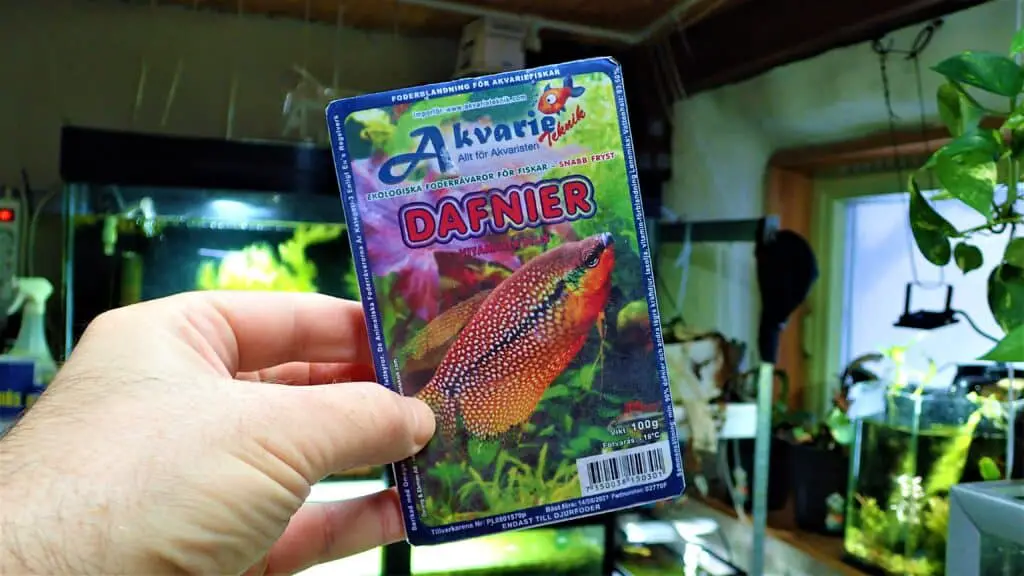
What is the best time of day to feed my aquarium shrimp?
The best time of day to feed aquarium shrimp is during their active hours. Shrimp are known to be more active during the evening and night, and feeding them during these hours can encourage their natural behavior and prevent overfeeding.
Additionally, feeding the shrimp during the evening or night can also help prevent competition with other organisms in the tank. Other organisms, such as snails and fish, are known to be more active during the day, and feeding the shrimp during this time can lead to competition and stress.
It is also important to note that the feeding frequency and quantity depend on the type of food and the size of the shrimp. It is recommended to feed the shrimp once or twice a day, depending on the type of food and the size of the shrimp. It is also essential to remove any uneaten food after a few hours to prevent water quality issues.
The best time of day to feed aquarium shrimp is during their active hours, which is typically in the evening or night. By feeding the shrimp during this time, you can encourage their natural behavior and prevent competition with other organisms in the tank.
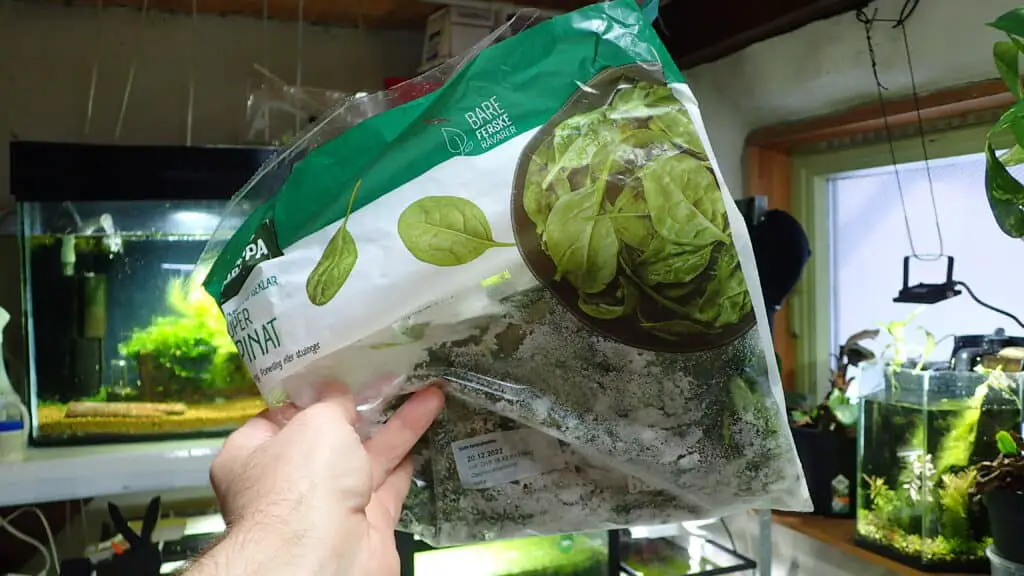
How do I know if my aquarium shrimp are getting enough food?
It can be challenging to determine if aquarium shrimp are getting enough food, as they are known to be scavengers and will eat almost anything they find. However, there are a few signs that can indicate if the shrimp are getting enough food.
One of the most obvious signs that the shrimp are getting enough food is their behavior. Healthy shrimp are known to be active and vibrant, and they will actively forage for food. If the shrimp appear lethargic or are not moving as much, it could be a sign that they are not getting enough food.
Another sign that the shrimp are not getting enough food is their size. If the shrimp are not growing or are becoming smaller, it could be a sign that they are not receiving enough nutrients in their diet.
Lastly, the water quality can also indicate if the shrimp are getting enough food. If the water quality is poor or there is an excess of uneaten food in the tank, it could be a sign that the shrimp are not getting enough food or are being overfed.
Determining if aquarium shrimp are getting enough food can be challenging. It is essential to monitor the shrimp’s behavior, size, and water quality to ensure that they are receiving all the necessary nutrients. By following these guidelines, you can ensure that your aquarium shrimp remain healthy and vibrant.

What are some common mistakes to avoid when feeding aquarium shrimp?
Feeding aquarium shrimp requires careful consideration to ensure that they receive all the necessary nutrients without harming their health or the water quality. Here are some common mistakes to avoid when feeding aquarium shrimp:
- Overfeeding: Overfeeding can harm the shrimp’s health and lead to water quality issues.
- Feeding human food: Feeding human food is not recommended as it can harm the shrimp’s health and lead to water quality issues.
- Feeding low-quality food: Low-quality food can harm the shrimp’s health and lead to poor growth and overall health.
- Feeding the same type of food over an extended period: Feeding the same type of food can lead to the accumulation of uneaten food, which can harm the water quality and lead to health problems.
- Not monitoring the feeding frequency and quantity: It is essential to monitor the feeding frequency and adjust it based on the shrimp’s behavior and the amount of uneaten food.
- Using the wrong type of food: It is important to use food that is specifically formulated for aquarium shrimp. Some types of food may contain harmful preservatives and additives that can harm the shrimp’s health.
- Feeding at the wrong time of day: Feeding aquarium shrimp during the day when they are less active can lead to competition with other organisms in the tank.
- Not providing a well-rounded diet: It is important to provide a well-rounded diet that includes a variety of nutrients to ensure that the shrimp receive all the necessary nutrients.
- Neglecting to remove uneaten food: Uneaten food can harm the water quality and lead to the growth of harmful bacteria and toxins.
- Not considering the molting process: During the molting process, shrimp are vulnerable to predators and stress, and reducing the feeding frequency during this time can reduce stress and provide a safer environment for the shrimp.
Feeding aquarium shrimp requires careful consideration and attention to ensure that they receive all the necessary nutrients without harming their health or the water quality. By avoiding these common mistakes and following the guidelines discussed in this article, you can ensure that your aquarium shrimp remain healthy and vibrant.
FAQ Section
Q: What should I feed my shrimp? A: Shrimp are generally omnivores, and they will eat a variety of foods including algae, pellets, flakes, and blanched vegetables. It’s important to provide a balanced diet, so it’s a good idea to offer a mix of different foods. Some shrimp keepers also like to give their shrimp treats like frozen or live foods.
Q: What do saltwater shrimps eat? A: Saltwater shrimp can have a more specialized diet than freshwater shrimp, but they will still eat a variety of foods. Depending on the species, they may eat plankton, algae, or detritus. Some saltwater shrimp are also filter feeders, and they will collect food particles from the water.
Q: Do shrimp bite or sting? A: Most shrimp do not bite or sting, and they are not harmful to humans. However, some larger species of shrimp may be able to give a painful pinch if they feel threatened. It’s best to avoid handling shrimp with your bare hands and use a net or gloves instead.
Q: Do shrimp like lettuce? A: Shrimp may eat lettuce, but it’s not a staple food for them. If you want to feed your shrimp vegetables, it’s better to offer blanched or boiled vegetables like zucchini, spinach, or carrots.
lettuce, but it’s not a staple food for them. If you want to feed your shrimp vegetables, it’s better to offer blanched or boiled vegetables like zucchini, spinach, or carrots.
Q: How do I keep my shrimp happy? A: To keep your shrimp healthy and happy, you should provide a suitable aquarium with clean water, plenty of hiding places, and a varied diet. It’s also important to avoid overfeeding and to keep the water parameters stable. Additionally, some shrimp species prefer specific water conditions, so it’s a good idea to research their specific requirements.
happy? A: To keep your shrimp healthy and happy, you should provide a suitable aquarium with clean water, plenty of hiding places, and a varied diet. It’s also important to avoid overfeeding and to keep the water parameters stable. Additionally, some shrimp species prefer specific water conditions, so it’s a good idea to research their specific requirements.
Q: Do shrimp eat live fish? A: Most shrimp do not eat live fish, although some larger species may be able to capture and eat small fish or fry. In general, shrimp are more likely to scavenge on dead or decaying fish rather than actively hunting live fish.
live fish? A: Most shrimp do not eat live fish, although some larger species may be able to capture and eat small fish or fry. In general, shrimp are more likely to scavenge on dead or decaying fish rather than actively hunting live fish.
Q: Do shrimp clean your teeth? A: There is no scientific evidence to support the idea that shrimp can clean your teeth. While some shrimp may feed on small particles of food in your mouth, they are not capable of cleaning your teeth like a toothbrush or dental floss.
Q: Do shrimp clean the ocean? A: Shrimp are a natural part of the ocean’s ecosystem, and they do play a role in breaking down and consuming dead or decaying organic matter. However, they are not capable of cleaning up large-scale pollution or contaminants in the ocean.
Q: Can shrimp have feelings? A: It’s unclear whether or not shrimp have emotions or feelings. While they do exhibit some behaviors that suggest they can experience pain or stress, it’s difficult to determine whether or not they have subjective experiences or emotions like humans do.
Q: Can I touch raw shrimp? A: You can touch raw shrimp, but it’s important to handle them with care and avoid cross-contamination with other foods. Raw shrimp can carry bacteria like salmonella, so it’s a good idea to wash your hands thoroughly after handling them.
Q: Can shrimp poison you? A: Some species of shrimp, like the mantis shrimp, are capable of delivering a powerful punch with their claws that can potentially cause harm to humans. However, most species of shrimp are not poisonous or harmful to humans.
Q: Can I feed raw cucumber to shrimp? A: Raw cucumber can be fed to shrimp, but it’s best to blanch or boil it first to make it easier for them to eat. Raw cucumber can be difficult for shrimp to digest and may cause digestive issues if fed in large quantities.
Q: Are carrots good for shrimp?
A: Yes, carrots are a good source of nutrition for shrimp, and they can be blanched or boiled and then offered as a treat. Carrots contain vitamins and minerals that can benefit shrimp, and they are a good source of dietary fiber.
Q: How long do shrimp live ? A: The lifespan of shrimp can vary depending on the species and their environment. Some shrimp species can live for several years, while others may only live for a few months. In general, shrimp tend to have shorter lifespans in aquariums than they do in the wild.
? A: The lifespan of shrimp can vary depending on the species and their environment. Some shrimp species can live for several years, while others may only live for a few months. In general, shrimp tend to have shorter lifespans in aquariums than they do in the wild.
Q: Can shrimp hurt my fish? A: Most shrimp are peaceful and won’t harm fish, but some larger species may be able to capture and eat small fish or fry. Additionally, some species of shrimp may become territorial and aggressive towards other shrimp or fish.
Q: Do shrimp clean fish tank? A: Shrimp can help keep a fish tank clean by eating leftover food and scavenging for debris. They are also known for eating algae and other organic matter, which can help prevent it from building up in the tank.
Q: Do shrimps eat goldfish ? A: It is unlikely that shrimp would eat goldfish, as goldfish are usually too large and fast for shrimp to capture. However, there have been cases of larger shrimp species attacking and killing small or sickly fish, so it’s important to monitor your aquarium for any signs of aggression.
? A: It is unlikely that shrimp would eat goldfish, as goldfish are usually too large and fast for shrimp to capture. However, there have been cases of larger shrimp species attacking and killing small or sickly fish, so it’s important to monitor your aquarium for any signs of aggression.
